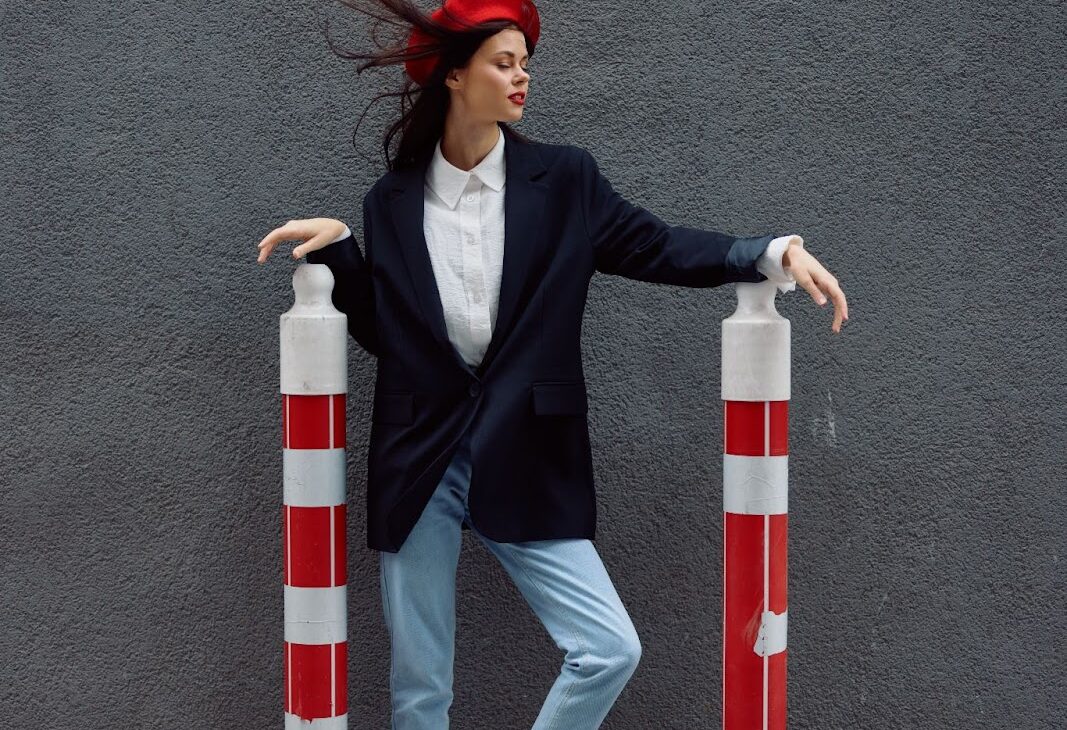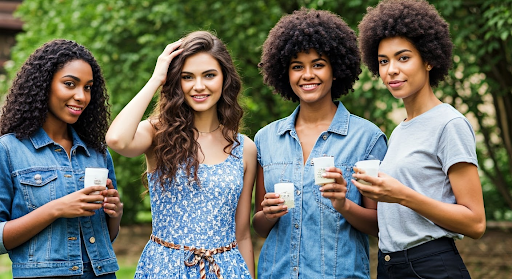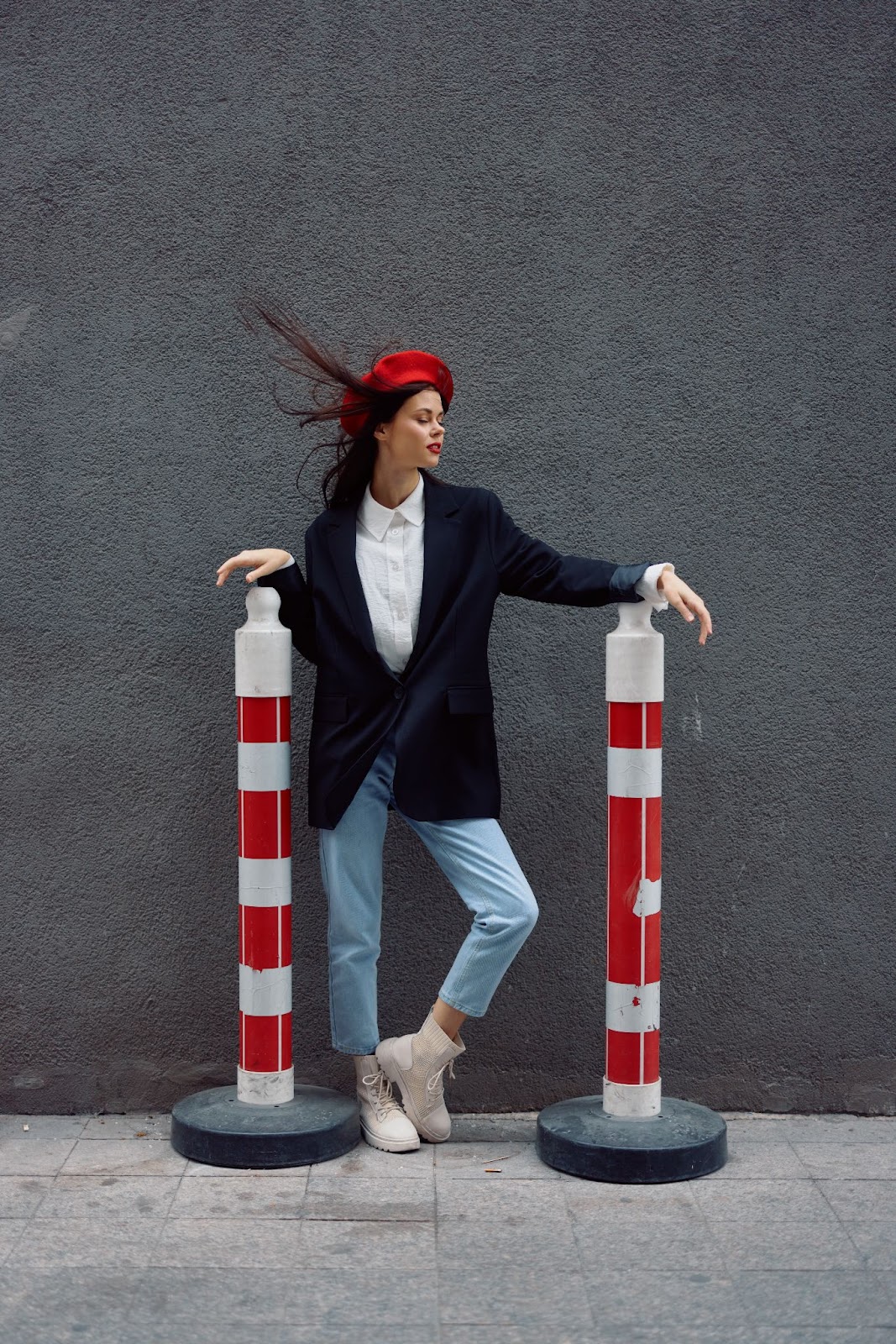
Whether you’re a brand striving to connect with your audience, a designer looking to showcase your vision, or a photographer eager to push boundaries, the challenge is the same: how do you create imagery that captivates, inspires, and leaves a lasting impression? This is where creative fashion photography becomes a game-changer.
It’s not just about taking pictures—it’s about storytelling, evoking emotions, and transforming ordinary moments into extraordinary visuals.
In this blog, we will guide you through the art of creative fashion photography, providing insights and tips to help you elevate your work. This blog will help you learn how to tell great stories and use techniques that bring your ideas to life, giving you the tools to stand out in a competitive world.
How to Plan and Prepare for a Creative Fashion Photoshoot?
Planning for the perfect creative fashion photograph calls for a thorough process. Whether you are tapping into the vibrant world of street fashion or creating images for editorial fashion photography, continue reading to have an in-depth understanding of the planning and preparation process.
1. Selecting the Theme and Concept
Choosing the theme and concept of your photoshoot is pivotal, as it forms the backbone of your creative vision. This process may involve drawing inspiration from existing fashion photographs, movies, magazines, nature, or even music. The larger the pool of references you have, the more diverse and unique your ideas will be.
The best part about selecting a theme and concept is that you get to decide the narrative of the image. Are you aiming to evoke a romantic saga or a fierce, power-packed image? Your choice of theme and concept effectively guides all other elements of your photoshoot, right from model selection, location, wardrobe, and shot compositions.
2. Finding the Ideal Location
Once you’ve decided on your photoshoot’s theme and concept, the next step is to find the ideal location that aligns with this creative vision. Your selected location contributes significantly to building the story your photograph projects.
For instance, if you aim to capture an aura of wanderlust, an infinite desert could make for a fitting backdrop. On the other hand, if your photoshoot involves bustling energy, nothing beats the dynamic streets of a busy city.
Different locations inspire different emotions, eventually adding depth to the narrative of your fashion photograph. Be it the comfort of your home setup, a mesmerizing location, or a controlled studio environment—every space has a unique character to influence your photograph’s appeal.
3. Working with a Stylist
A crucial aspect of a successful fashion photoshoot is working harmoniously with a stylist who understands your concept and serves to visualize it through the models’ attire. Together, you can create striking looks that highlight the latest trends and complement your chosen theme.
The stylist’s role involves curating appropriate ensembles for the model(s), which includes clothing items, accessories, footwear, and more. Their experience and insights into the fashion world can significantly enrich your photograph’s visual narrative.
Connecting creatively with a stylist and reproducing your vision through their expertise can add an extra layer of charm to your fashion photographs.
4. Choosing Appropriate Props and Wardrobe Items
Another decisive element in planning a fashion photoshoot is the selection of appropriate props and wardrobe items. The clothing and accessories worn by the model carry the essence of the story you wish to communicate in your fashion photograph.
Depending on your creative vision, vibrant warm tones of red and orange can inspire passion and power, while blues and purples can generate a mysterious ambiance.
Props can be as simple as a flowering plant or an artistic chair. Having elements to interact with can drastically change the model’s purpose in the image, influencing how they move and respond to you. Always have a collection of options on the set, and don’t shy away from using them in imaginative ways.
What Defines a Great Fashion Photograph?
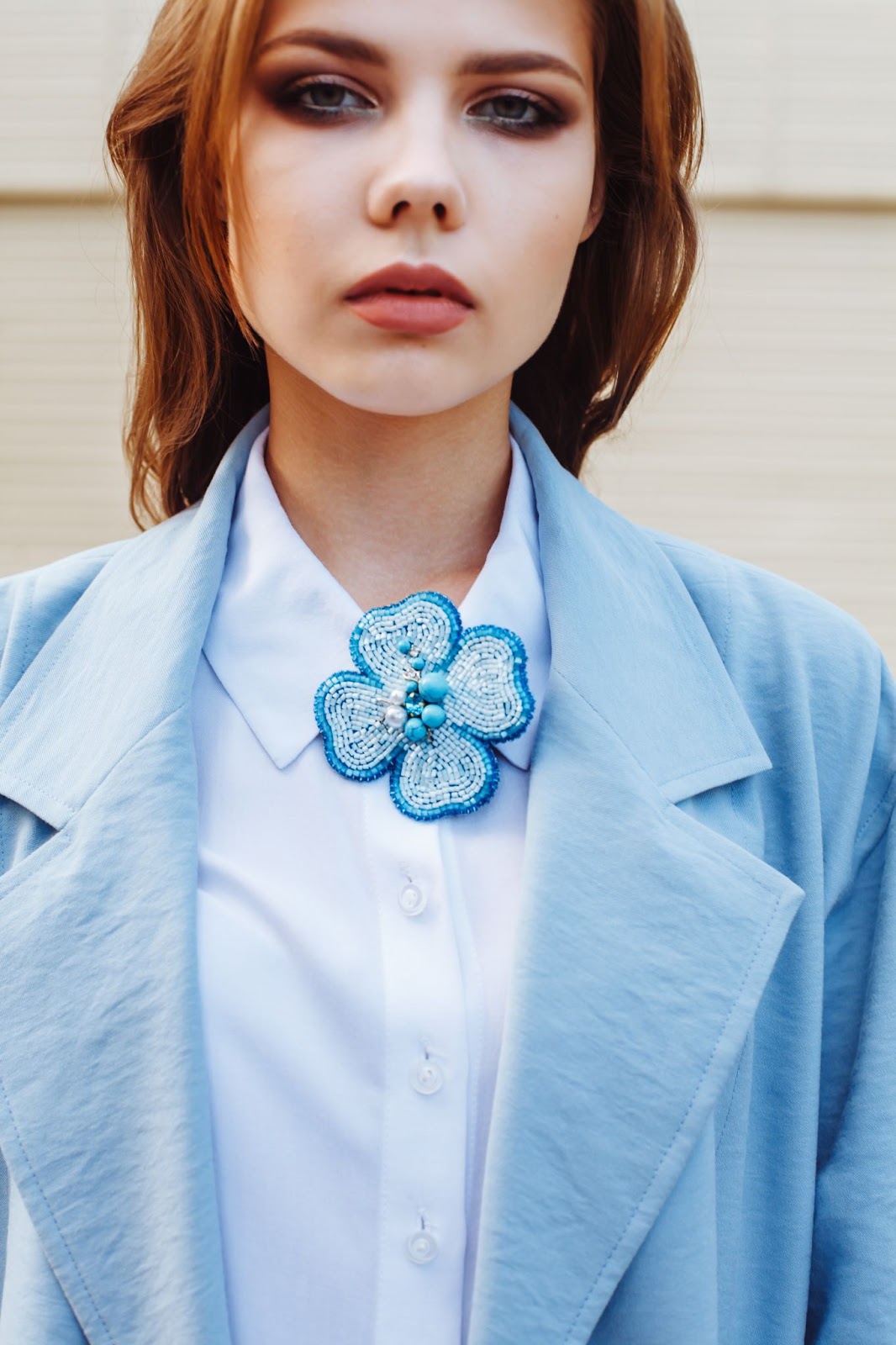
A great fashion photograph is a harmonious blend of composition, angle, storytelling, and overall mood. It combines technical prowess with an eye for the extraordinary, creating something memorable from every click. In this section, we will discuss the key components of a great photograph in detail. Stay tuned!
Strong Composition
A strong composition is a cornerstone of creating outstanding fashion photographs. It involves arranging elements in a scene in such a way that they collectively tell a story and engage the viewer effectively. Your composition adds meaning to your photograph, guiding the viewer’s focus and emotions.
Leading lines, rule of thirds, and symmetry are a few powerful composition techniques often used in cool fashion photography. The use of space, how you place your model(s), the background elements, and even how the clothing creates lines within the frame—every bit counts in defining your image’s visual weight and balance.
Effective Lighting
In essence, photography is the art of understanding and utilizing light. Without light, there is no image. In fashion photography, mastering light can sculpt your images in amazing ways. Whether it’s natural light, artificial, continuous, or strobe lights, techniques to harness them are vast and complex.
From understanding how natural light adapts in different circumstances to applying controlled lighting methods for more deliberate effects, each approach brings a unique mood to your image.
Attention to Detail
Fashion photography thrives on meticulous attention to detail. Every element in your photograph, from the model’s expression and pose to the placement of a designer’s accessory or capturing the fabric’s texture, plays a critical role in creating a stand-out image.
By paying importance to the smallest details, you add depth and intricacy to your imagery. Even trivial adjustments in the model’s expression or the tweak in the angle of an accessory can significantly shift the visual impact of your image.
Clear Focus on the Product
In fashion photography, such as fashion dress photography, it’s paramount that the main product—the garment or accessory—remains clearly in focus. The objective is emphasizing the product’s appeal to the viewer. Hence, it should primarily dominate your composition.
Whether it’s an extravagant gown, an exquisite piece of jewelry, or a stylish footwear collection, the product should be shown at its absolute best. This involves highlighting its unique features, capturing its texture, showcasing how it looks in motion, and more.
Emotion and Storytelling
A great fashion photograph extends beyond depicting the physical beauty of a model or outfit—it tells a story. From setting the mood through colors to using props and backgrounds that add depth to the narrative, how you construct your images impacts the message they convey.
Fashion photography offers a platform to express emotions and weave tales of all kinds—it can echo freedom, power, glamour, nostalgia, romance, or even mystique. Each image you create can reflect a spectrum of emotions, making them more relatable and stirring for viewers.
When your fashion photographs tell stories, they retain a sentimental value, transforming from mere visuals into compelling narratives.
Also, read our blog on Types of Fashion Photography: A View on 9 Different Types
What Must be the Ideal Settings for Fashion Photography?
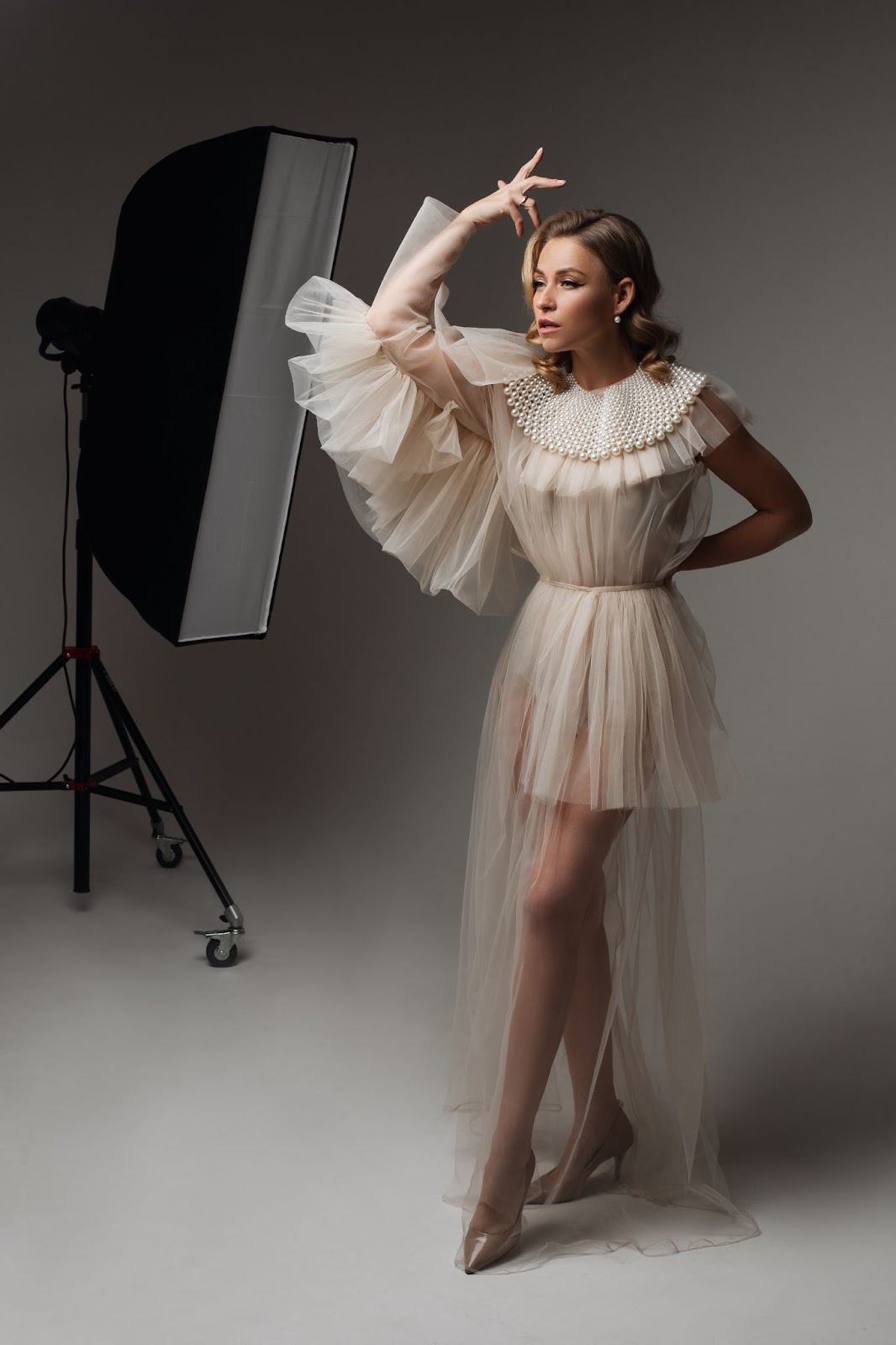
The ideal settings for fashion photography hinge on your shooting environment. Knowing your camera’s manual settings, such as aperture, shutter speed, and ISO, can help you resourcefully navigate diverse lighting scenarios. Here’s a quick overview of the manual settings that must be used for fashion photoshoots.
Settings for Shooting outdoors with natural light
When shooting outdoors in natural light, the time of the day plays a vital role in determining your camera settings. Early mornings and late afternoons, often called the ‘Golden Hours,’ are ideal for capturing natural beauty and achieving beautiful images with soft light and minimal shadows.
Here is a suggested guideline for manual camera settings when shooting outdoors with natural light:
|
Camera Settings |
Outdoor Shooting with Natural Light |
|
ISO |
Between 100—400 |
|
Shutter Speed |
Higher than 1/250, typically 1/400 |
|
Aperture |
f2.8—f5.6 for a soft, dreamy image with shallow depth of field; f8—f16 to capture both the model and surroundings clearly |
Settings for Shooting indoors with low light
Shooting indoors with low light can be challenging, but tweaking your settings accordingly can get you rich, well-lit images. Keep in mind that adjusting ISO to high levels can introduce more noise into your photographs.
The suggested manual camera settings for indoor low-light shooting are:
|
Camera Settings |
Indoor Shooting with Low Light |
|
ISO |
Between 1600 — 4000 |
|
Shutter Speed |
Between 1/160 —1/250 |
|
Aperture |
Between f1.8—f4 |
These settings help balance the limited light and offer better control over your indoor fashion photoshoot.
Settings for Shooting with studio lighting
Studio photography provides the advantage of having complete control over the light and settings. Your choice of style significantly influences the light setup. However, aligning with your studio lighting, the suggested manual camera settings are:
|
Camera Settings |
Shooting with Studio Lighting |
|
ISO |
100 |
|
Shutter Speed |
1/160 |
|
Aperture |
f8 |
The above settings can create a crisp image. You may also experiment heavily within the studio using various aperture settings to create the desired result aligning with your image composition.
10 Must-Consider Creative Fashion Photography Tips
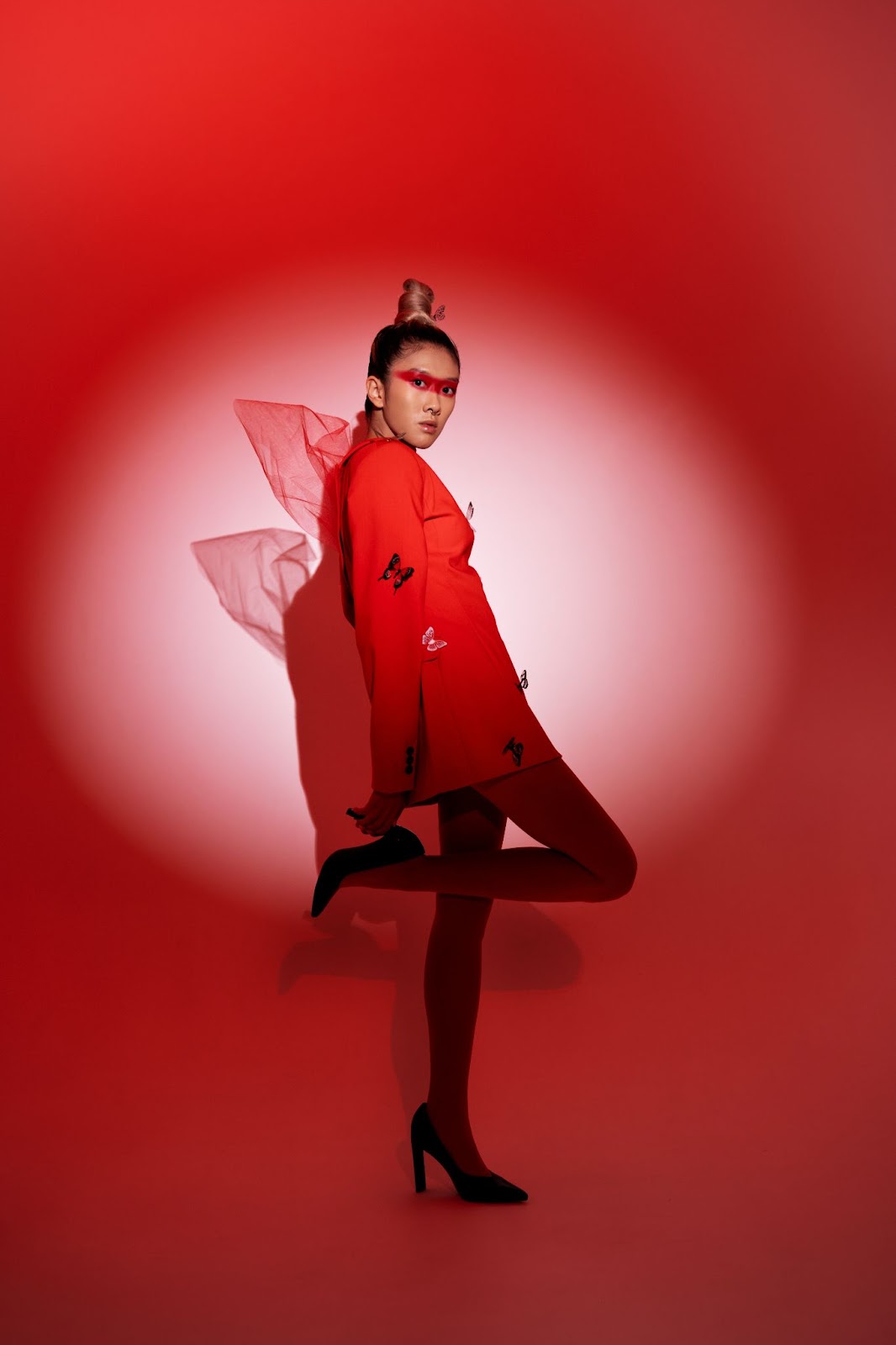
Taking your fashion photography a notch higher involves embracing creativity at all levels. Here are ten essential tips that can transform your fashion photographs into intriguing pieces of art. Each approach challenges conventional norms, encouraging you to experiment with angles, work with reflections, and employ post-processing wisely. Let’s dive in!
1. Play with Unconventional Angles
Playing with unconventional angles is a key technique in creative fashion photography. By experimenting with different perspectives, photographers can add depth and intrigue to their images.
Utilizing different angles can help capture the essence of high fashion and showcase the fine details of a garment or accessory. Whether shooting from above, below or at unexpected angles, incorporating unconventional perspectives can infuse a sense of drama and artistry into fashion photographs, setting them apart from the traditional shots commonly seen in fashion magazines like Harper’s Bazaar and Vogue magazine.
2. Use Unique Props
Incorporating unique props in your fashion photography is a great way to boost the overall composition, add depth to the story, and create a visual dynamic within the frame. Props can range from simple objects like a vintage mirror or a flower bouquet to more quirky ones like a feather boa or an antique chandelier.
Props provide elements for the model to interact with, contributing to more natural poses and actions. Whether used for aesthetic enhancement or functional purposes, props can drastically alter the mood and concept of your fashion photographs.
However, remember not to let these elements overshadow the protagonist—the fashion product.
3. Leverage Bold Lighting Techniques
Lighting is essential in setting the tone and creating depth in your images. Implementing bold lighting techniques can dramatically change the style and feel of your fashion photographs. Mixing natural and artificial lighting can texture the image with stunning contrasts and highlights.
By incorporating emerging trends in lighting, such as neon lights or colored gels, you can produce images that redefine conventional fashion narratives. Combining distinct light forms, like a harsh spotlight with a soft backlight, can also create a fascinating interplay of light and shadow.
4. Incorporate Movement and Dynamic Poses
Movement makes images come alive! One of the creative ways to make your fashion photography stand out is by incorporating dynamic poses and capturing movement. Typically, static poses might fall short of expressing the character of the fashion piece—but with movement, you bring out the costume’s vibrancy.
Whether it’s flowing gowns, flared skirts, or loose scarves—movement adds an element of spontaneity and energy to the images. Directing your model to spin, jump, or strut can create ripples in the outfits, offering photos that are stimulating and bursting with life.
5. Experiment with Backgrounds
The backdrop of your fashion photograph is a significant element that contributes to its overall mood and narrative. Changing backgrounds drastically alters the context of your outfit and model, leading to images that stand out.
You can choose from an array of options, from simple white backgrounds for a minimalistic look to textured canvases for a rustic feel. Urban landscapes offer dynamic backdrops, while studio settings provide control over every aspect of the image. A change in background can transform the entire vibe of the photograph, creating a nuanced narrative that beautifully blends with each outfit and concept.
6. Work with Reflections and Transparencies
Incorporating reflections and transparencies in your fashion photographs can open up creative avenues for stunning images. Experiment with reflective surfaces like mirrors or water bodies to add a layer of depth to your composition.
Transparencies, on the other hand, not only create intriguing overlay effects but also enable playfulness with light and shadow. Fabric transparencies can contribute to achieving soft, diffused lighting effects, lending a dreamy aura to your images.
Reflections and transparencies offer endless possibilities to manipulate light and create beautiful photos that seize the viewer’s attention instantaneously.
7. Focus on Close-Ups
While it’s imperative to capture the entirety of the outfit in a fashion photograph, focusing on close-ups can highlight small details often missed at wider angles. Close-up shots magnify elements like the texture of the fabric, intricate embroidery details, unique accessory designs, and the model’s expressive emotions.
A strong close-up can draw attention to the subtleties that create dramatic intensity and detail within the image. It can intensify the palette, draw emphasis on the craftsmanship of the garment, and pull the viewer’s focus on the finer aspects of your fashion photograph.
8. Play with Color Theory
A vital component in creating visually stunning fashion photographs is a thorough understanding of color theory. In fashion photography, colors convey emotions, set the mood, and play an essential role in settling the narrative of your image.
Warm colors like reds and oranges can portray passion and power, while cooler hues like blues and purples can evoke mystery. Understanding how to coordinate, contrast, and match colors can significantly impact how your images get perceived.
Experimenting with color schemes and playing with them can create a visually rich and cohesive set of images that deepen the emotional response of your viewers.
9. Add a Narrative Element
Often, the magic of high fashion photography lies in its ability to narrate a story visually. Adding a storytelling element can effectively enhance the connection with the viewer while conveying a broader context. This narrative can range from the simple elegance of a garment to a complex, ongoing trend in the fashion world.
Your photograph should guide the viewer through the scene, allowing their eyes to weave in and out of the visual cues you present. By ensuring that every aspect of your photograph contributes to the story, you offer an engaging, immersive experience to your viewers that transcends beyond just a quick glance.
10. Utilize Post-Processing Wisely
Never underestimate the power of post-processing in the realm of fashion photography. It can refine the overall look and feel of your images, harmonize elemental inconsistencies, and correct minor imperfections.
With tools like Adobe Photoshop and Adobe Lightroom, you can control contrast, saturation, and exposure, fix blemishes, or even alter colors. Lightroom presets can provide a consistent look and feel to your series of images with one-click adjustments.
Remember, though—the idea of post-processing is to enhance the beauty of the existing photograph rather than overhaul it completely. A harmonious balance between shooting and editing creates a compelling representation of your creative vision.
Flix Studio: Your Partner for Stunning Fashion Imagery
At Flix Studio, we specialize in creating stunning fashion photography that doesn’t just showcase your designs but tells your story. With a perfect blend of artistic creativity, cutting-edge techniques, and a deep understanding of current trends, Flix Studio transforms your vision into images that resonate with your audience.
Our team of expert photographers works closely with designers, brands, and influencers to produce high-quality imagery that stands out in the competitive landscape. From editorial photography to vibrant lookbooks and social media-ready content, Flix Studio ensures your fashion line makes an unforgettable impact.
Choose Flix Studio for your next project and let your brand shine with powerful, visually striking photography that turns heads and drives results. Your style deserves the spotlight—let Flix Studio make it happen.
Conclusion
Fashion photography is an art that weaves together style, elegance, creativity, and technical skill to tell enchanting stories through images. Mastering it is all about meticulous planning, experimenting with fashion photoshoot ideas, and understanding the nuances of different styles and techniques. Whether you’re shooting for fashion advertising or exploring different ways to capture unique perspectives, the right preparation, use of bright colors, and attention to styling can transform your work.
With these insights and 10 tips discussed in this blog, you are now equipped to create impactful images that speak a thousand words and inspire bold fashion photography ideas every time.
Frequently Asked Questions
How to start a creative fashion photography business?
Starting a creative fashion photography business involves cultivating the right skills, building a robust portfolio, choosing your niche, developing a business plan, investing in quality equipment, networking with other professionals in the fashion industry, and promoting your services effectively.
How do fashion photographers get paid?
Fashion photographers primarily get paid through assignment-based work or by selling their photographic prints. They bill their clients for the photography session, processing and editing services, travel expenses, and any props or additional equipment used during the photoshoot.
What is the role of a creative director in fashion photography?
The role of a creative director in fashion photography involves conceptualizing the creative vision for a photoshoot, coordinating with the photographer, models, makeup artists, and stylists, and overseeing the photoshoot to ensure that the final images align with the intended aesthetic and narrative.

